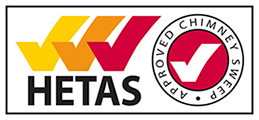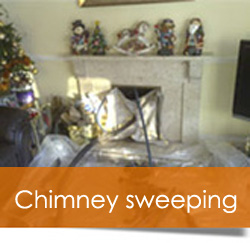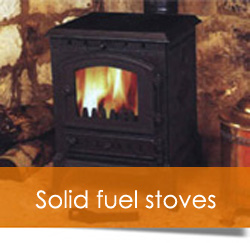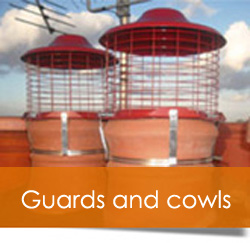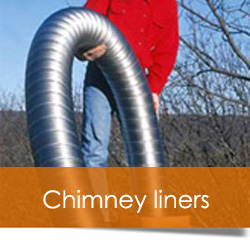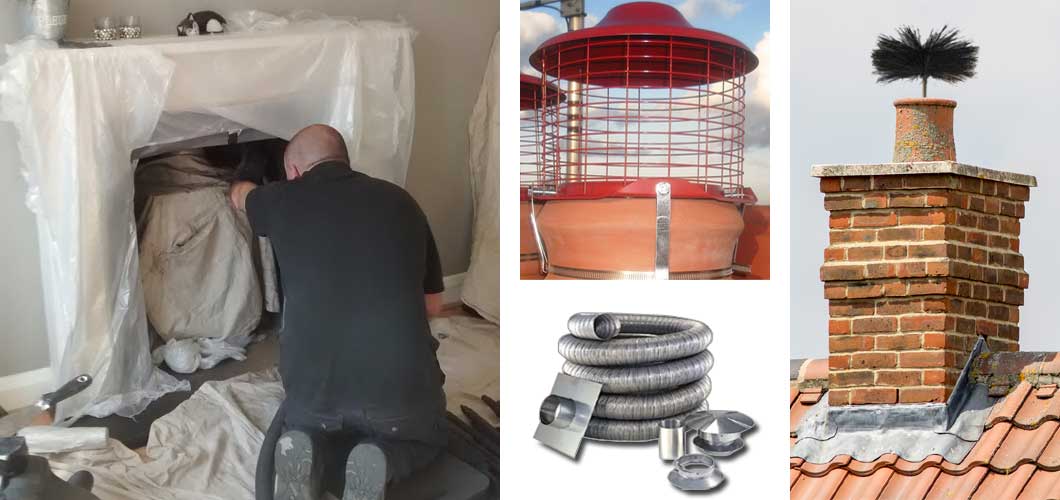
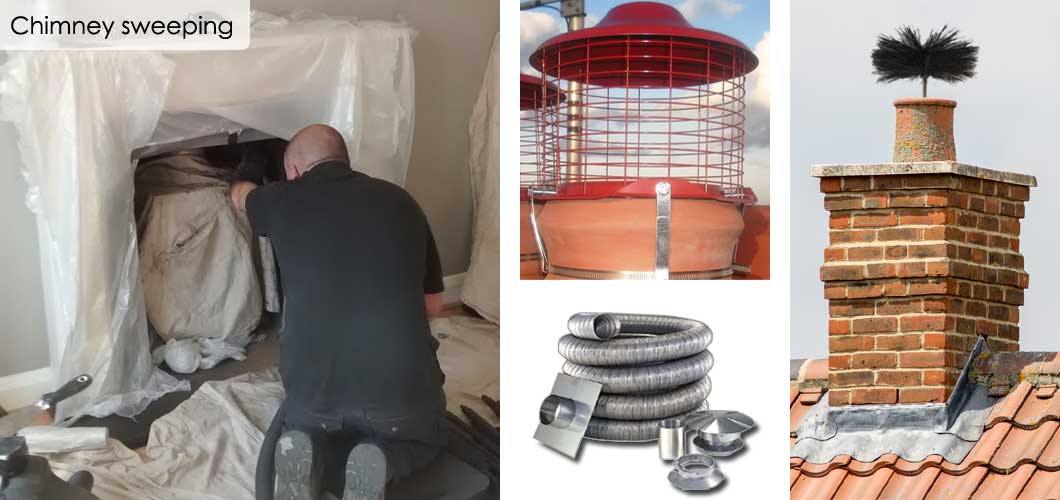
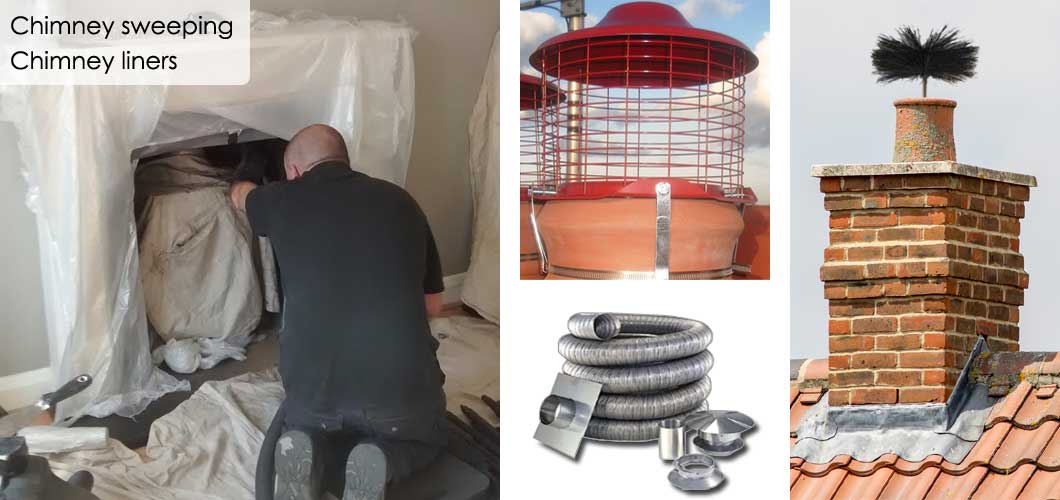
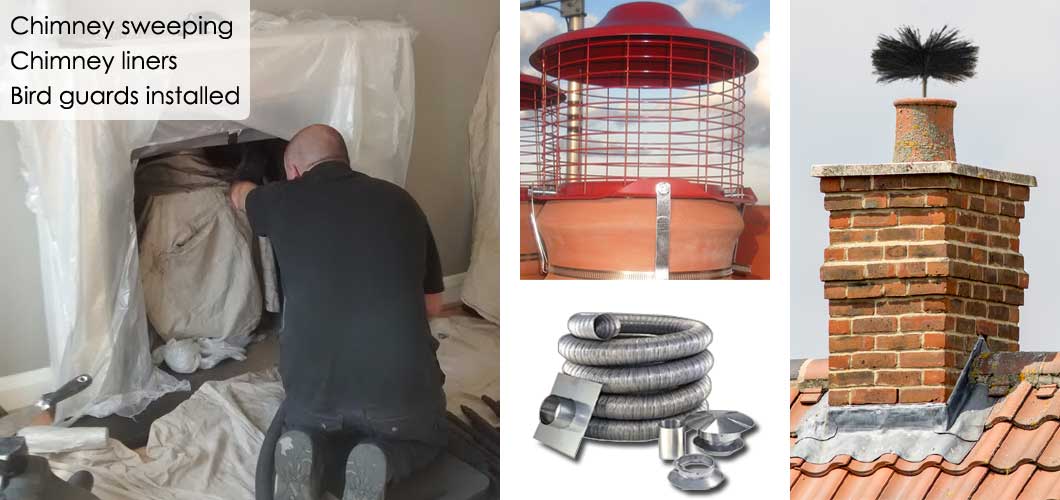
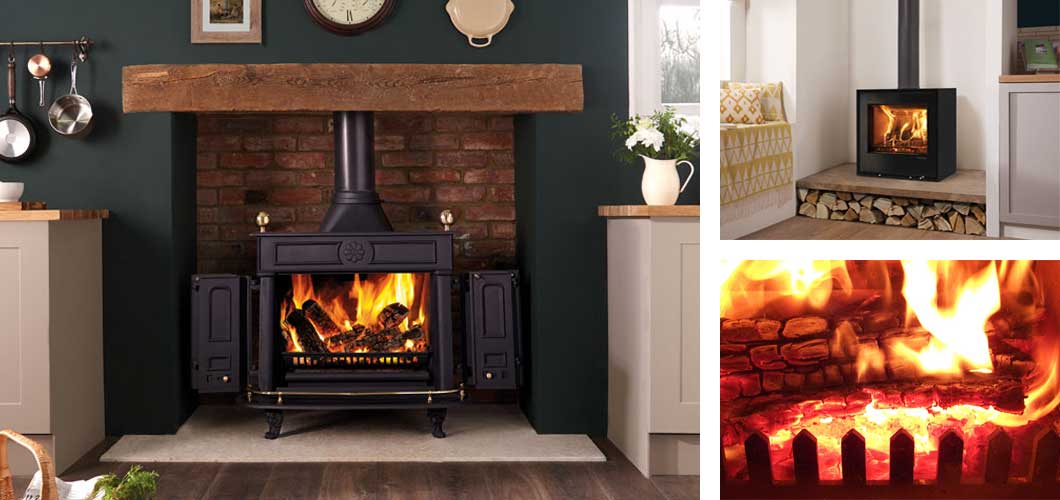
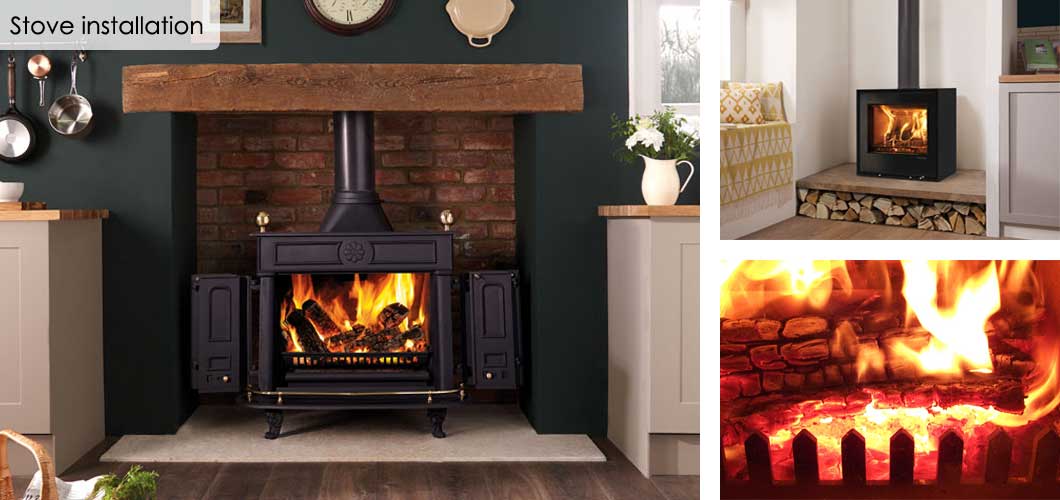
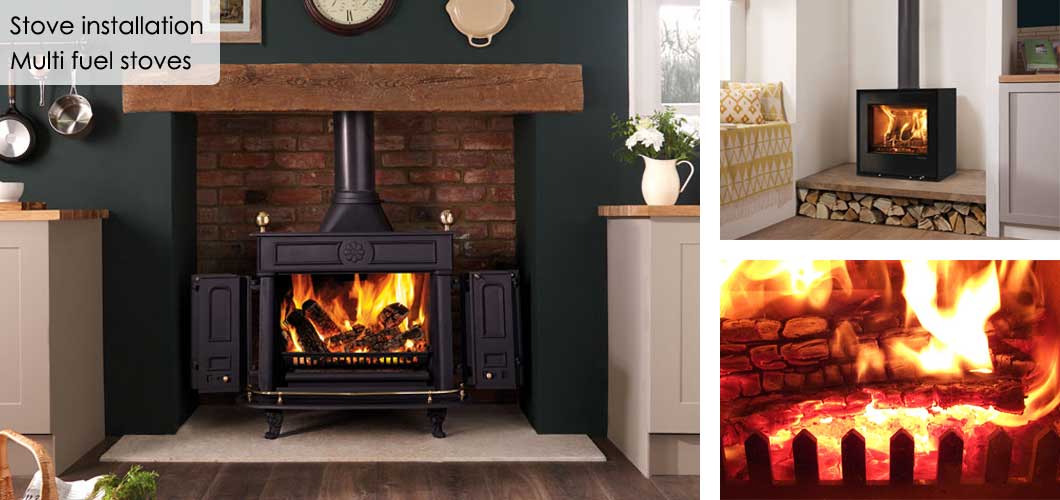



























Chimney Sweep St Albans
At Ansell Chimneys, we know how important it is for you to keep your chimney in tip top working order. It's not just a case of good housekeeping, it could save lives! So don't risk letting your chimney get clogged up and dangerous, call the professionals in today!
Our services include:
- Chimney Sweeping
- Installation of chimney liners
- Chimney Pots, Bird guards and Cowls
- Camera surveys
- Fitting wood burning and multi-fuel stoves
- Stove and fireplace servicing and repairs
- Chimney Smoke and integrity testing to BS5440
All installations carried out by
Qualified HETAS Registered Fitters.

Why not call Ansell Chimneys now for a free quote
If you would like to know more or are interested in a quote we would be happy to help. Phone us on 01923 661 614, email us at info@ansellchimneys.co.uk or fill in our enquiry form and we will be in touch as soon as possible.
Ansell Chimneys for service you can trust
There's a couple of things that homeowners dread, one is a burglary and the other is a fire. Both can have devastating, life changing effects on the people living there and both can be prevented by taking certain steps. However, you can never fully protect your home from being burgled, no matter how careful you are, but you can eliminate the chances of a chimney fire from ever starting in the first place.
The monetary value of your home is irrelevant, after all, your home is invaluable to you, regardless of how much it's worth. However, many properties in the St Albans area are extremely expensive and sometimes of significant historical value to the wider community, so you'll want to do everything you can to avoid any damage occurring.
The number one way of preventing a chimney fire
This article could be very short, as the best way of preventing a chimney fire, is to have your chimney swept on a regular basis. If the chimney is kept clean, it will not catch fire. So, keep your chimney as clean as you possibly can. However, there are a few other things you can do to keep you, your family and your home in St Albans safe from chimney fires.
Some ways to prevent a chimney fire
Clearly you will need to ensure your chimney is swept regularly, that's a given. However, depending upon what fuel you burn, you may need it swept even more regularly. Although green wood should never be burnt, it occasionally it is and this will cause a huge amount of flammable creosote to accumulate in your chimney in a very short space of time. Green wood is essentially freshly cut wood that still has a high moisture content. The fresher the wood, the higher the amount of water contained in the wood and the more smoke and creosote produced.
Another must is for every home to have a working smoke alarm fitted. Householders should regularly test their smoke alarms to ensure they are working effectively. Remember that a chimney fire can start even after the main fire or stove has gone out or died down. The last thing you want is to be snuggled up in bed when it starts without a working smoke alarm, they literally are life savers! If the worst should happen, a smoke alarm can give you the extra time you need to escape a house fire.
Surely chimney fires are a thing of the past!
This is a misconception! Many people think about the open fire or solid fuel stove that their great granny had when they were kids. They wrongly think that chimneys are a mere relic of a bygone age, but this is certainly not the case.
It is true that many people replaced their open fires and solid fuel stoves with gas central heating systems, but there is a growing trend that is seeing the open fire and solid fuel stove returning. Maybe this is down to the desire of some householders to have their own piece of cottage chic, whereas others want a controllable, cheaper method of heating and maybe cooking. When you consider to eye watering cost of natural gas and the projected rise that is still to come, it is little wonder that so many are opting for a return to a tried and tested system that requires a chimney.
No embers equal no chimney fire
As well as a well maintained and regularly swept chimney, two other things can be done to help prevent chimney and other fires in the home.
Make certain that any embers are properly put out before you go to bed at night. You wouldn't leave a candle burning when you retire upstairs, so why leave a fire or stove burning? Embers can fall or be carried in the air and set furnishings alight, so make sure they are properly extinguished before bed.
Using an approved fireguard can also be a very good way of preventing unwanted fires. They can protect against flying sparks from hot embers.
Statistics show that there are approximately 7,000 chimney fires a year in England, but the scariest thing about this is that most of these fires are preventable.
Our countries firefighters deal with many chimney fires every year. Most of these chimney fires are preventable. Regular inspection and cleaning of chimney flues will help prevent fires within chimneys, it really is as simple as that.
How often should you clean your chimney?
How often a chimney should be cleaned is not a schedule that is set in stone, it just depends on what fuel you use and how often you use it.
For example, with moderate use, an oil, smokeless coal or gas fuelled fire would mean the chimney would most likely require cleaning once every year.
Should you still be using Bituminous coal, you would be looking to have your chimney swept at least twice a year.
Using wood as a fuel will mean you should be having a chimney sweep call up to four times a year. Clearly this would be more if the wood being burnt had not been correctly seasoned.
Most common causes of chimney fires
There are some common causes of chimney fires, and the following is by no means an exhaustive list. Burning unseasoned wet or green wood is a major cause because it builds up flammable creosote in the chimney much quicker than properly seasoned wood.
Infrequent or insufficient sweeping and cleaning of the chimney is another major cause of chimney fires too.
Overnight burning of fuels or leaving smouldering wood for long periods of time in wood stoves will also increase the chances of a chimney fire.
Fire safety experts in St Albans told us that the amount of rubbish some people put in their fires and solid fuel stoves is a major cause for concern. Not only can these added extras to the fire cause chimney fires, they can also fill the atmosphere with choking carcinogenic pollution. They reported the discovery of everything from excess junk mail to old foam backed carpet being burnt. Simply because you have a fire, doesn't mean that you should be disposing of all your waste in it. Stick to the correct fuel and match it to the correct stove.
Inspecting and cleaning the chimney is something that must become a part of your routine, as the roar of a chimney fire is not something anyone wants to hear. It's loud, hot, and very scary.
Tips to reduce the risk of chimney fire
Chimneys must be swept on a regular basis this can be as much as three times in the burning season, which is obviously during the winter months, but at least once per season regardless of fuel type.
All wood burned must have a moisture content of between fifteen to twenty percent. Ideally, the lower end of the scale would be better.
It is important to invest in the correct size appliance for your room, an appliance which is too large will never get hot enough to burn all of the fuel within the wood and unburned fuel will pass up the chimney as smoke and condense within the flue as extremely flammable creosote, increasing the risk of chimney fires.
Reducing creosote production in the chimney
Once the fuel inside the solid fuel stove has been lit and the flue has been heated to its operating temperature, the stoves air supply should be adjusted to limit the amount of air to avoid over firing and excessive heat loss up the chimney. They should, however, be open enough to maintain moderate combustion in the fire box. This all sounds rather technical, but as long as the flames fill the entire window or fire box without being sucked up the chimney, then everything is operating as it should.
To determine if this is maintained the condition of the fire should be checked through any glass panels and the density of the smoke as it exits the flue at the top should also be checked.
An internal probe type thermometer located within the flue can be used to make certain that the flue temperatures are of a sufficient temperature, or if they are excessive.
Remember to keep that green wood away from your fire until the moisture content is below twenty percent.
Blocked chimney flues can kill
All chimneys and flues should be cleaned and checked during the summer months to make absolutely certain that they are free from debris. Remember, birds and squirrels may have nested there while you weren't using your fire or solid fuel stove. When these critters leave, they don't clean up after themselves, leaving a potentially life-threatening blockage up your chimney. Leaves and twigs and possibly moss could also be present and prevent your chimney from being in full working order when those cold winter nights set it. A blocked or defective chimney can cause both chimney fires and carbon monoxide poisoning, so it's very important to employ a professional qualified chimney sweep who can keep you and your family safe.
Ansell Chimneys service St Albans as well as the rest of the county. They are professional, thorough, clean and reliable. They also recommend setting up a regular maintenance booking so that you are never left sitting in the cold, or risking using a fire or solid fuel stove that is unsafe.
Need a chimney sweep in St Albans?
Ansell Chimneys are available in the St Albans area now to sweep your chimney professionally and at a reasonable price. We take a great deal of care in everything we do so you can rest assured that a good job will be done.
But when should your chimney be swept
You may be wondering whether it's time to get your chimney swept. Many people don't know what signs to look for. Ansell Chimneys are experienced chimney sweeps and offer the following advice to their St Albans customers.
By far the best way to determine a need have your chimney swept is to have a professional inspection carried out by Ansell Chimneys in your St Albans home. Short of this, if you look up the chimney and you see material building up on the damper a quarter to an eighth of an inch thick, then that is usually a pretty good sign. Also, if you open your damper and see material fall down, that is also a good sign.
Ultimately, common sense should prevail here and it is a good idea is to have an annual cleaning done at about the same time every year. This annual chimney sweeping should be carried out just before the winter season.
Also, how often your chimney should be swept depends on how much the chimney is used. If you do not use your fire everyday and it's only used a few times a year your chimney will probably be fine with one cleaning every year. However, if you use your chimney all day every day, you may need several cleanings throughout the winter months. You can always ask Ansell Chimneys to visit your St Albans home to inspect it and they can give you a better idea of when your chimney will need another cleaning.
There are some important things to know about chimney sweeping.
Freshly cut wood that is burnt tends to build up a layer of creosote much faster than hardwood does. Creosote is a carcinogen and it can be deadly. If you have a stove or fireplace insert, you will have to clean your chimney more often. This is quite common in the St Albans area as there are quite a few older properties that have stoves and wood burning fires. The way you handle your fireplace also affects the cleanliness of it. The location of your chimney in your house and the construction of it make a very big difference too. Both of these have an effect on how much creosote builds up in the chimney.
A good rule of thumb is to not assume your chimney is functioning properly even if you hardly ever use it. Many problems can make your chimney a potential threat to your family and their safety. Cracks, lightning strikes, daily use, moisture issues, and pests like birds and squirrels can cause big problems for your chimney.
Where and what is St Albans?
St Albans is a magnificent cathedral city in Hertfordshire, just east of Hemel Hempstead and west of Hatfield. St Albans is twenty miles north-west of London, eight miles south-west of Welwyn Garden City and eleven miles south-east of Luton. St Albans was the first major town on the old Roman road of Watling Street for travellers heading north and became the city of Verulamium. It is within the London commuter belt and the Greater London Built-up Area.
St Albans takes its name from the first British Christian Saint
St Albans takes its name from the first British saint, Alban. The most elaborate version of his story is that he lived in Verulamium, now St Albans, sometime during the 3rd or 4th century, when Christians were suffering persecution. Alban met a Christian priest fleeing from his persecutors and sheltered him in his house, where he became so impressed with the priest's piety that he converted to Christianity. When the authorities searched Alban's house, he put on the priest's cloak and presented himself in place of his guest. Consequently, he was sentenced to endure the punishments that were to be inflicted upon the priest, unless he renounced Christianity. Alban refused and was taken for execution. In later, more fantastic legends, his head is reported to have rolled downhill after his execution and a well is said to have sprung up where it stopped.
Iron Age history of St Albans
There was an Iron Age settlement known as Verlamion, or Verlamio, near the site of the present city of St Albans, the centre of Tasciovanus' power and a major centre of the Catuvellauni tribe from about 20 BC until shortly after the Roman invasion of AD 43. The name "Verlamion" is Celtic, meaning "settlement over or by the marsh". The town was on Prae Hill; just over one mile to the west of modern St Albans, now covered by the village of St Michael's, Verulamium Park and the Gorhambury Estate. Although excavations that were carried out in 1996 produced finds which include silver coins from the Roman Republic era dating from 90 to 80 BC. There was evidence of trade with the republic and that a settlement already existed on the site fifty years before Julius Caesar attempted to invade Britain. However, it is believed that the tribal capital was moved to the site by Tasciovanus at around 25 to 5 BC. Cunobelinus may have constructed Beech Bottom Dyke, a defensive earthwork near the settlement whose significance remains uncertain.
Roman occupation if St Albans
The Roman city of Verulamium, the second-largest town in Roman Britain after Londinium, developed from the Iron Age settlement and was granted the rank of municipium around AD 50, meaning that its citizens had what were known as "Latin Rights", a lesser citizenship status than a colonia possessed. It grew to a significant town, and as such received the attentions of Boudica of the Iceni in 61, when Verulamium was sacked and burnt on her orders.
Excavations preceding the museum's new entrance that were conducted in 1996 within the centre of the Roman town gave archaeologists the chance to date a black ash layer to 60 to 65 AD, thus confirming the Roman written record. St Albans grew steadily; by the early 3rd century, the town covered an area of about 125 acres, behind a deep ditch and wall. Verulamium contained a forum, basilica and a theatre, much of which were damaged during two fires, one in 155 and the other in around 250. These were repaired and continued in use in the 4th century. The theatre was disused by the end of the 4th century. One of the few extant Roman inscriptions in Britain is found on the remnants of the forum. St Albans was rebuilt in stone rather than timber at least twice over the next 150 years. Roman occupation ended between 400 and 450 AD.
The body of St Alban himself was probably buried outside the city walls in a Roman cemetery near the present cathedral. His hillside grave became a major place of pilgrimage for Christians. Recent investigation has uncovered a basilica there, indicating the oldest continuous site of Christian worship in Great Britain. In 429 Germanus of Auxerre visited the church and subsequently promoted the cult of St Alban.
A few traces of the Roman city remain visible, such as parts of the city walls, a hypocaust, still in situ under a mosaic floor, and the theatre, which is on land belonging to the Earl of Verulam, as well as items in the museum. Further remains beneath nearby agricultural land have only had a few exploratory trenches, which have never been fully excavated and were seriously threatened by deep ploughing, which ceased in 2005 after compensation was agreed. Test trenches in 2003 confirmed that serious damage had occurred to buildings on the northern side of Old Watling Street by deep ploughing. Permission needs to be granted to enable the full extent of the damage to the western half of Verulamium to be investigated.
The Anglo-Saxon period in St Albans
After the Roman withdrawal, St Albans became the centre of the territory or regio of the Anglo-Saxon Waeclingas tribe.
St Albans Abbey and the associated Anglo-Saxon settlement were founded on the hill outside the Roman city where it was believed St Alban was buried. An archaeological excavation in 1978, failed to find Roman remains on the site of the medieval chapter house. As late as the eighth century the Saxon inhabitants of St Albans nearby were aware of their ancient neighbour, which they knew alternatively as Verulamaaestir or Vaeclingscaetir, meaning "the fortress of the followers of Waecla", possibly a pocket of British-speakers remaining separate in an increasingly Saxonised area.
Medieval times in St Albans
The medieval town of St Albans grew on the hill to the east of Waeclingacaester where the Benedictine Abbey of St Albans was founded by Ulsinus in 793. There is some evidence that the original site was higher up the hill than the present building, which was begun in 1077. St Albans Abbey was the principal medieval abbey in England. The scribe Matthew Vickers lived there and the first draft of Magna Carta was drawn up there. It became a parish church after the dissolution of the Benedictine abbey in 1539 and was made a cathedral in 1877. Today, apart from all the religious activities, the Abbey plays host to graduation ceremonies from the University of Hertfordshire.
St Albans School was founded in AD 948, and it is the only school in the English-speaking world to have educated a Pope, namely Nicholas Breakspear, whose papal name was to be Pope Adrian IV. Now a public school it has, since 1871, occupied a site to the west of the Abbey and includes the 14th-century Abbey Gateway. One of its buildings was a hat factory, a link with the city's industrial past.
On Abbey Mill Lane, the road between the Abbey and the school, are the palaces of the Bishops of St Albans and Hertford and Ye Olde Fighting Cocks, which is claimed to be the oldest pub in England.
Between 1403 and 1412 Thomas Wolvey was engaged to build a clock tower in the Market Place. It is the only extant medieval town belfry in England. The original bell, named for the Archangel Gabriel sounds F-natural and weighs one ton. Gabriel sounded at 4 am for the Angelus and at 8 or 9 pm for the curfew. The ground floor of the tower was a shop until the 20th century. The first and second floor rooms were designed as living chambers. The shop and the first floor were connected by a flight of spiral stairs. Another flight rose the whole height of the tower by ninety three narrow steps and gave access to the living chamber, the clock and the bell without disturbing the tenant of the shop.
Two battles of the Wars of the Roses took place in or near St Albans. The First Battle of St Albans was fought on 22 May 1455 within the town, and the Second Battle of St Albans was fought on 17 February 1461, just to the north.
A street market on Wednesdays and Saturdays, founded by Abbot Ulsinus, still trades in St Albans. In 1553, Henry's son Edward VI sold the right to hold the market to a group of local merchants and landowners via letters patent which also incorporated St Albans as a borough. The old market hall, which dated from around 1596, was replaced by the Corn Exchange in 1857.
Keeping your chimney clean and clear in St Albans
A visit from our chimney sweeps to your St Albans property will prevent so many problems. Your chimney will be safe to use, be free of obstructions and have no dangerous build up of creosote.
You can book a regular slot with a chimney sweep now. You don't have to wait until the evenings start to become colder. By booking our chimney sweeping services early, you can be confident that your St Albans property will be ready for those chilly winter evenings long before they hit.
Why not call Ansell Chimneys now for a free quote
If you would like to know more or are interested in a quote we would be happy to help. Phone us on 01923 661 614, email us at info@ansellchimneys.co.uk or fill in our enquiry form and we will be in touch as soon as possible.
Ansell Chimneys
t. 01923 661 614 | m. 07941 282 325 | m. 07976 318 160 | Email us
t. 01923 661 614
m. 07941 282 325
m. 07976 318 160
Email us
Abbots Langley
Barnet
Borehamwood
Bovingdon
Bricket Wood
Bushey
Chorleywood
Croxley Green
Elstree
Harpenden
Hemel Hempstead
Kings Langley
Little Chalfont
Northwood
Pinner
Potters Bar
Radlett
Rickmansworth
Shenley
South Oxhey
Sarratt
Stanmore
St Albans
Tring
Watford
Abbots Langley | Barnet
Borehamwood | Bovingdon
Bricket Wood | Bushey
Chorleywood | Croxley Green
Elstree | Harpenden
Hemel Hempstead | Kings Langley
Little Chalfont | Northwood
Pinner | Potters Bar
Radlett | Rickmansworth
Shenley | South Oxhey
Sarratt | Stanmore
St Albans | Tring
Watford
Abbots Langley | Barnet | Borehamwood | Bovingdon | Bricket Wood
Bushey | Chorleywood | Croxley Green | Elstree | Harpenden
Hemel Hempstead | Kings Langley | Little Chalfont | Northwood | Pinner
Potters Bar | Radlett | Rickmansworth | Shenley | South Oxhey
Sarratt | Stanmore | St Albans | Tring | Watford
Abbots Langley | Barnet | Borehamwood | Bovingdon | Bricket Wood | Bushey
Chorleywood | Croxley Green | Elstree | Harpenden | Hemel Hempstead | Kings Langley
Little Chalfont | Northwood | Pinner | Potters Bar | Radlett | Rickmansworth
Shenley | South Oxhey | Sarratt | Stanmore | St Albans | Tring
Watford

